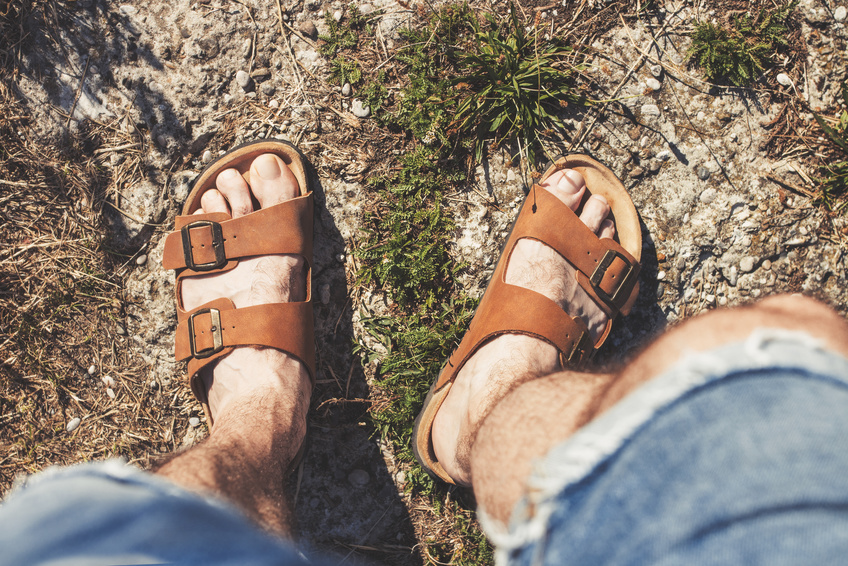Summer is a time where lots of people toss their tennis shoes and boots aside and opt for sandals or bare feet. While it isn’t always bad to go barefoot, you can run into problems such as plantar fasciitis, Achilles or posterior tibial tendinitis, metatarsalgia, neuroma, or IT band syndrome, if you aren’t careful.
As a physical therapist, I recommend supportive sandals/shoes all year round. The extra cushion, arch support, and raised heel place the foot in more neutral positions and take stress off the structures of the foot, protecting them from over-use and injury.
Why can walking barefoot cause foot pain?
When we walk barefoot a few things occur that can alter how we walk and cause pain or injury. The heel sits lower than the forefoot, placing increased strain on the Achilles and other tendons around the ankle. Without shoe support, the arch of your foot tends to fall or collapse more causing increased stress placed through your forefoot. The pressure from over-pronation can irritate the nerves between your toes and cause inflammation and pain. Walking barefoot also takes a toll on the fat pad in your heel. It’s protective and cushioning behavior lessens after prolonged barefoot walking, putting your plantar fascia at risk for irritation and increased heel pain.
So, what if you already went barefoot and are experiencing foot pain?
Here are a couple of exercises that can lessen your pain and symptoms:
- Ice Rolling – Fill up an old plastic water bottle, let it freeze. Roll it on the bottom of your foot, massaging the arch of your foot as you roll. Roll for 5 minutes every couple of hours to relieve pain and inflammation. Watch a video here.
- Seated Foot stretch – Without shoes on, cross your left leg so that your ankle rests on your right thigh. Hold your toes and bend them back towards your shin. You will feel a stretch across the bottom of your foot. Hold for 30 seconds and then repeat on the other side. Watch a video here.
Due to how often we stand and put weight through our feet, it can take some time for symptoms and pain to subside. If your pain or symptoms persist greater than 7-10 days, get in to see your Freedom Physical Therapy Services Therapist. They can offer manual techniques, tissue mobilization, and modalities that will reduce your pain and symptoms, allowing you to return to your previous activity level.
Can going barefoot have benefits?
There are always those that feel like going barefoot builds strength in the intrinsic musculature of your feet and lower extremity and improves your gait mechanics. I can’t argue about that statement, as there is some truth to it. However, many don’t have the foot type that allows us to go barefoot without external support (shoes). The repetitive stress and loading without some type of protection and support are too much for our bodies to overcome and leads to injury. Go find a supportive summer sandal and enjoy the summer!

